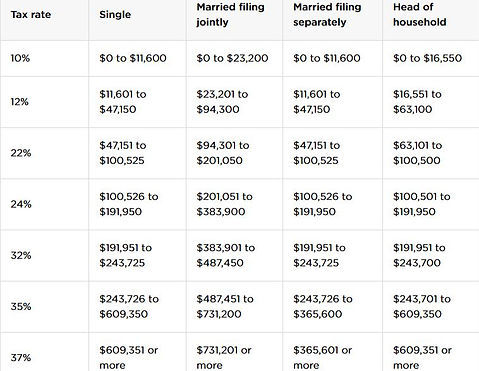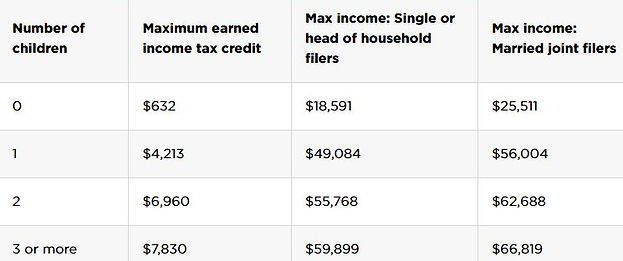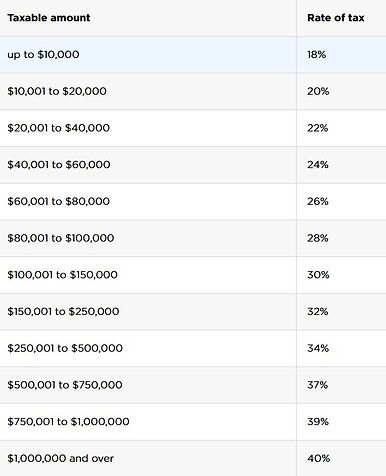
WHAT DO YOU NEED TO BRING WHEN YOU ARE READY TO FILE YOUR TAXES?
Personal information
Let’s start with the obvious items on any tax prep checklist.
-
Last year’s taxes. Both your federal and — if applicable — state return. These aren’t strictly necessary, but they’re good refreshers of what you filed last year and the documents you used. Plus, if you're using tax software to file, many providers can upload your prior-year return to save you time from manually keying in your information.
-
Social Security and/or tax ID numbers. Have these tax identification numbers ready for yourself, your spouse and all dependents. Remember, in addition to children, dependents can include elderly parents and others.
-
IP PIN. If you, your spouse or a dependent have been issued an identity protection PIN by this IRS, you'll likely need to have this handy as well.
-
Bank account numbers. If you're opting to receive a refund or pay your tax bill directly through your bank account, be prepared to provide your tax pro or software with those routing and account numbers.
» Need to back up? How tax returns work
Income
Gather all the documents that confirm the money you received during the previous year.
-
W-2 forms. Employers must issue or mailyour W-2 by Jan. 31, so keep an eye on your mailboxes, both physical and electronic.
-
1099 forms. 1099s are informational records that detail additional income you received throughout the year. There are many types of 1099 forms and each ends with a different suffix, depending on the type of payment you received. You should expect to receive these Jan. 31 through mid-February. Common 1099s include:
Self-Employment and Business Record
A 1099-MISC typically summarizes income earned through gameshow winnings, royalties or rentals.
-
If you’re paid via a third party such as PayPal or Venmo, you’ll likely get a 1099-K.
-
Investment earnings show up on 1099-INT for interest, 1099-DIV for dividends and 1099-B for broker-handled transactions.
-
If you’re self-employed, you need to report that income. You can also claim business expenses to lower your taxable income.
-
1099-NEC or 1099-K showing income earned as an independent contractor
-
Records of all business income and expenses
-
Documentation for home office expenses, including square footage of home and square footage of area used exclusively for business
-
Records for business assets to be depreciated, including cost and date placed in service
-
Miles traveled for business purposes
Deductions
Deductions help reduce your taxable income, which generally means a lower tax bill. The key to claiming deductions is documentation — not only can it protect you if you’re ever audited, but it can also cut your tax bill by helping you remember what to claim. Gathering those records may take time, but it can pay off.
You don’t have to itemize to benefit from some deductions. These are listed directly on Form 1040. More deductions are available if you itemize expenses on Schedule A.
Here’s a rundown of some popular tax deductions. Make sure you have documentation for each before you file:
-
Retirement account contributions. You can deduct contributions to a traditional IRA or self-employed retirement account. Just be sure to stay within the contribution limits and rules.
-
Educational expenses. Students can claim a deduction for tuition and fees they paid, as well as for interest paid on a student loan. The IRS won’t accept your deduction claim without Form 1098-T, which shows your education transactions. Form 1098-E has details on your student loan.
-
Medical bills. Medical costs could provide tax savings, but only if they total more than 7.5% of adjusted gross income for most taxpayers.
-
Property taxes and mortgage interest. If your mortgage payment includes an amount escrowed for property taxes, that will be included on the Form 1098 your lender sends you. That document will also show how much home loan interest you can claim on Schedule A.
-
Charitable donations. To ensure your generosity pays off at tax time, keep your receipts for charitable donations. The IRS could disallow your claim if you don’t have verification.
-
Classroom expenses. If you’re a school teacher or other eligible educator, you can deduct up to $300 spent on classroom supplies ($600 if both spouses are educators filing jointly).
-
State and local taxes. You can deduct various other taxes, including either state and local income tax or sales taxes (up to $10,000, including property taxes). You don’t need receipts for the sales tax; the IRS provides tables with average amounts you can claim. The tax on a major purchase, however, can be added to the table amount, so keep those receipts.
Note that state income taxes paid should be on your W-2 but remember to add any state estimated taxes you paid during the year.
» MORE: See key IRS forms you need to know about before filing your tax return
Other tax documents
-
IRA contributions
-
Energy credits
-
Student loan interest
-
Medical Savings Account (MSA) contributions
-
Moving expenses (for tax years prior to 2018 only)
-
Self-employed health insurance payments
-
Keogh, SEP, SIMPLE and other self-employed pension plans
-
Alimony paid that is tax dedcutible
-
State and local income taxes paid
-
Real estate taxes paid
-
Personal property taxes—vehicle license fee based on value
-
Estimated tax payment made during the year, prior year refund applied to current year, and any amount paid with an extension to file.
-
Foreign bank account information—location, name of bank, account number, peak value of account during the year
Tax deduction documents:
-
Child care costs—provider’s name, address, tax id, and amount pai
-
Adoption costs—SSN of child, legal, medical, and transportation costs
-
Investment interest expense
-
Casualty and theft losses—amount of damage, insurance reimbursements
-
Other miscellaneous tax deductions—union dues, unreimbursed employee expenses (uniforms, supplies, seminars, continuing education, publications, travel, etc.) (for tax years prior to 2018 only)

TAX BRACKETS FOR THE
CURRENT TAX YEAR
CURRENT INFORMATION BY NERD WALLET
Standard Deduction and Personal Exemption
The standard deduction for 2024 is $14,600 for single filers, $29,200 for joint filers, and $21,900 for heads of household. People 65 or older may be eligible for a higher amount.
The 2024 standard deduction is taken on tax returns filed in 2025.
2024 Standard Deduction
2024 Tax Brackets and Rates
The income limits for all 2024 tax brackets and all filers will be adjusted for inflation and will be as follows (Table 1). There are seven federal income tax rates in 2024: 10 percent, 12 percent, 22 percent, 24 percent, 32 percent, 35 percent, and 37 percent. The top marginal income tax rate of 37 percent will hit taxpayers with taxable income above $539,900 for single filers and above $693,750 for married couples filing jointly.
2024 Federal Income Tax Brackets and Rates for Single Filers, Married Couples Filing Jointly, and Heads of Households

Consistency
That means that we keep in close contact with you and the pulse of your business on a monthly basis. If there are changes in the economy affecting your taxes, we’ll know about it and help you plan solutions.
Alternative Minimum Tax (AMT)
The Alternative Minimum Tax (AMT) was created in the 1960s to prevent high-income taxpayers from avoiding the individual income tax. This parallel tax income system requires high-income taxpayers to calculate their tax bill twice: once under the ordinary income tax system and again under the AMT. The taxpayer then needs to pay the higher of the two.
The AMT uses an alternative definition of taxable income called Alternative Minimum Taxable Income (AMTI). To prevent low- and middle-income taxpayers from being subject to the AMT, taxpayers are allowed to exempt a significant amount of their income from AMTI. However, this exemption phases out for high-income taxpayers. The AMT is levied at two rates: 26 percent and 28 percent.
2024 Alternative Minimum Tax (AMT) Exemptions
The alternative minimum tax exclusion and phase-outs are adjusted for inflation each year. For the 2024 tax year (taxes filed in 2025), the exemption amounts rise to $85,700 for single filers, $133,300 for those married filing jointly, and $66,650 for those married filing separately.
2024 AMT exclusions and phase-outs Filing Status Threshold
Welcome visitors to your site with a short, engaging introduction. Double click to edit and add your own text.

Earned Income Tax Credit (EITC)
-
The earned income tax credit is a refundable credit for low- to middle-income workers.
-
For the 2024 tax year (taxes filed in 2025), the tax credit ranges from a max of $632 to $7,830, depending on tax filing status, income and number of children.
-
Taxpayers without children can qualify for a lower credit amount.
-
For the 2024 tax year (taxes filed in 2025), the max earned income credit amounts are $632, $4,213, $6,960 and $7,830, depending on your filing status and the number of children you have.
2024 Earned Income Tax Credit (EITC) Parameters
Child Tax Credit
For 2024, the child tax credit is worth up to $2,000 per qualifying dependent child. The refundable portion, also known as the additional child tax credit, is worth up to $1,700.
Capital Gains Tax Rates & Brackets (Long-term Capital Gains)
Long-term capital gains are taxed use different brackets and rates than ordinary income (Table 6.)
2024 Capital Gains Tax Brackets
Qualified Business Income Deduction (Sec. 199A)
The Tax Cuts and Jobs Act of 2017 (TCJA) includes a 20 percent deduction for pass-through businesses. Limits on the deduction begin phasing in for taxpayers with in 2024, the limits rise to $191,950 for single filers and $383,900 for joint filers.
2024 Qualified Business Income Deduction Thresholds
Annual Exclusion for Gifts
The gift tax limit (also known as the gift tax exclusion) is $18,000 for 2024. For married couples, the limit is $18,000 each, for a total of $36,000. This amount is the maximum you can give a single person without having to report it to the IRS.







